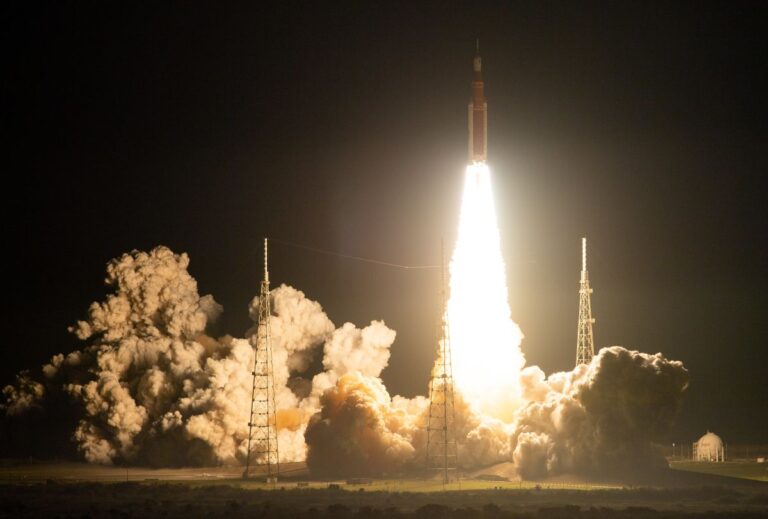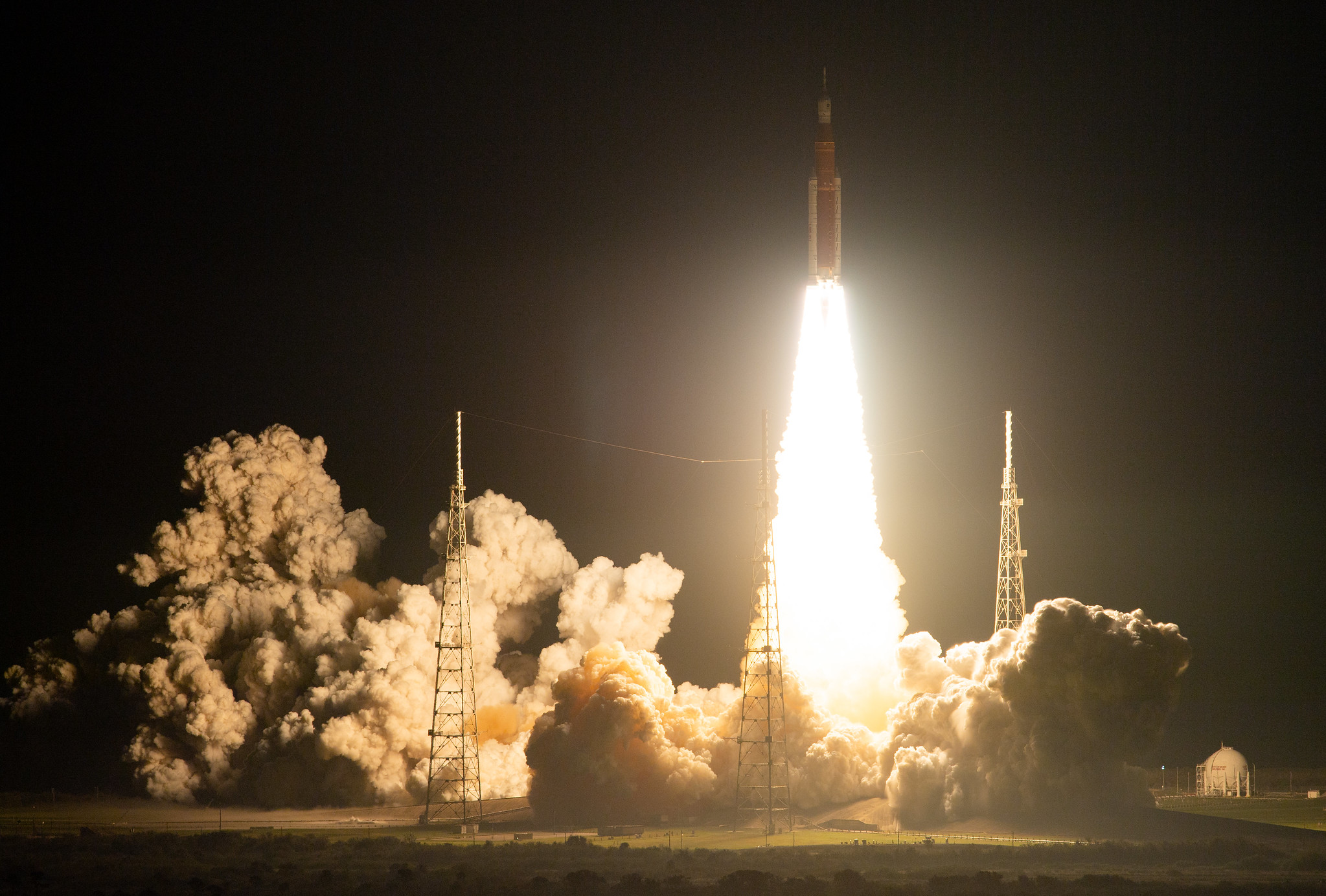
[ad_1]

CAPE CANAVERAL, FLA — NASA’s epic Artemis 1 moon mission is finally underway.
Artemis 1 lifted off today (Nov. 16) at 1:47 a.m. EST (0647 GMT) from Pad 39B here at NASA’s Kennedy Space Center, marking the debut of NASA’s huge new Space Launch System (SLS) rocket and kicking off a 25-day journey to the moon and back for the uncrewed Orion spacecraft.
That trek will put Orion and its European-built service module through its paces. Here’s a brief primer on what to expect over the next three and a half weeks.
Related: NASA’s Artemis 1 moon mission: Live updates
More: 10 wild facts about the Artemis 1 moon mission
Orion will spend the next six days flying toward the moon. Next Monday (Nov. 21) — T+6 days since launch — Orion will perform its lowest lunar pass, flying within about 60 miles (100 kilometers) of the lunar surface.
This maneuver will take advantage of the moon’s gravity, slingshotting Orion farther away. The service module will then perform a second burn at T+10 days (Nov. 25) to insert the spacecraft into a distant retrograde orbit (DRO), where it will spend a week at an altitude of about 38,000 miles (61,000 km) above the lunar surface. During this stretch, on mission day T+13 (Nov. 28), Orion will break the record set by Apollo 13 for a crew-rated vehicle’s greatest distance from Earth, reaching nearly 300,000 miles (483,000 km) from our planet.
While in DRO, a suite of passive and active sensors on board Orion will measure radiation and other flight conditions to allow researchers to better understand the conditions astronauts will experience during a crewed mission. Even though Artemis 1 is uncrewed, Orion isn’t completely devoid of passengers.
Strapped into the capsule’s command chair is NASA’s “Moonikin Campos,” a manikin equipped with internal sensors for radiation and sensors in its seat to record gravimetric and vibrational forces during flight. Accompanying Campos, two “phantom” manikins will also be along for the ride. Dubbed Helga and Zohar, these two limbless torso busts contain over 6,000 passive and 34 active dosimeters apiece and will study the effectiveness of a specialized radiation vest called AstroRad.
Helga and Zohar were built using materials that mimic human bone and muscle tissue. Their construction includes components specific to female anatomy in order to mimic ovaries and breast tissue, which are more susceptible to radiation. The duo are part of the Matroshka AstroRad Radiation Experiment (MARE), though only Zohar will wear the AstroRad vest; Helga will serve as a control. Once the manikins are back on Earth, researchers will compare radiation exposures between the pair.
If effective, the AstroRad vest will allow astronauts to perform tasks around their spacecraft when they would otherwise need to take shelter to avoid approaching radiation events. Unlike protections offered by the planet’s magnetic field in low Earth orbit, areas of space farther from our planet are more prone to radiation, and therefore pose a higher risk for astronaut exposure.
On mission day T+16 (Dec. 1), Orion’s service module will perform its DRO departure burn, putting Orion on track for the vehicle’s second-lowest lunar pass four days later. The service module will then perform one final burn to set Orion on its return journey to Earth. From there, it’s a six-day cruise back toward our blue-green marble.
On Dec. 11, Orion will come home, barreling into Earth’s atmosphere at about 25,000 (40,000 kph) — a huge test for the capsule and its heat shield, which will endure temperatures up to 5,000 degrees Fahrenheit (2,750 degrees Celsius). Orion will then splash down under parachutes in the Pacific Ocean, bringing the Artemis 1 mission to a close.
If all goes well with Artemis 1, Artemis 2 will send astronauts on a lunar flyby in 2024 or thereabouts, and Artemis 3 will land crew near the moon’s south pole a year or so later. From there, NASA will continue building a sustainable human presence on and around the moon, the main goal of the agency’s Artemis program.
Artemis 1’s launch was a long time coming. The mission team initially tried to lift off on Aug. 29 but called that attempt off due to multiple issues, including an off-nominal temperature reading in one of the SLS’s main engines.
Confident the cause of that errant reading lay in a faulty sensor rather than the engine cooling system itself, NASA tried again on Sept. 3. That opportunity was also scrubbed when mission operators encountered a hydrogen leak during core stage propellant loading. Artemis 1 then encountered further delays thanks to the weather — Hurricane Ian in late September and Tropical Storm Nicole last week.
Follow us on Twitter @Spacedotcom (opens in new tab) or on Facebook (opens in new tab).
[ad_2]